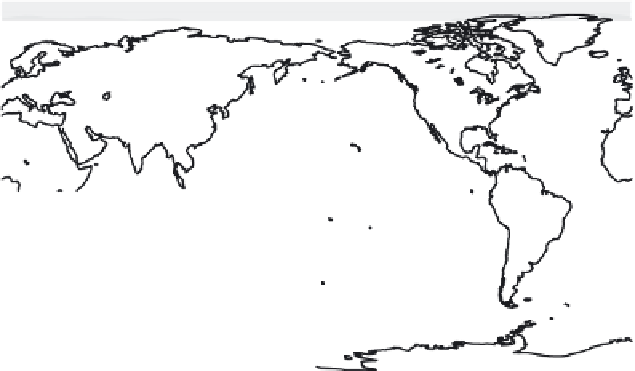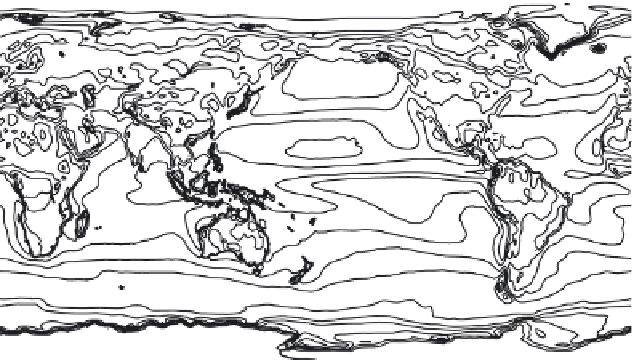Geoscience Reference
In-Depth Information
90°N
60
60
50
60
60
50
50
50
40
40
40
60°N
40
40
50
40
30
30
30
30
30
20
30
30°N
20
20
30
20
20
20
30
20
20
Equator
20
20
30
30
20
20
30°S
30
30
20
30
30
30
30
40
40
60°S
40
40
50
50
50
60
50
60
60
60
50
90°S
0°
30°E
60°E
90°E 120°E 150°E 180° 150°W 120°W 90°W 60°W 30°W 0°
Figure 5.6 The planetary albedo (%).
(a)
(b)
8%
re
ected
40%
re
ected
θ
Z
= 80°
θ
Z
= 0°
92%
absorbed
60%
absorbed
Figure 5.7 The dependence of water albedo on solar zenith angle, q
z
.
Figure 5.8
shows the annually averaged longwave radiative flux emitted
by the earth system, that is, the OLR. Large values of OLR are generated at
low latitudes where emission temperatures are warmer, and in regions with
low clouds or few clouds where the OLR originates closer to the surface (and,
therefore, at higher temperatures).
A comparison of
Figures 5.5b
and
5.8
shows that the solar radiation ab-
sorbed at tropical latitudes is greater than the longwave radiation emitted.
The opposite is true at high latitudes.
Figure 5.9a
shows the difference—the
solar radiation absorbed minus the longwave radiation emitted at the top of
the atmosphere. The net radiative heating is positive in the tropics where the
solar radiation absorbed is up to 60 W/m
2
greater than the OLR. It is negative
at higher latitudes, where the OLR exceeds the solar radiation absorbed by up
to 120 W/m
2
. The latitude at which the solar radiation absorbed and the OLR
balance is close to 30° in both hemispheres.










































































































































































































































































































































































































































